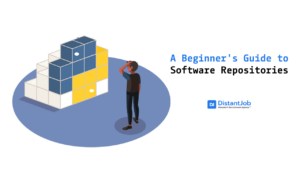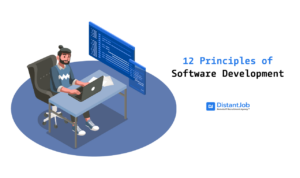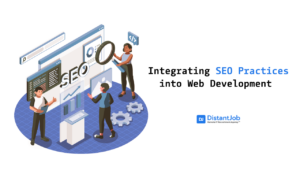Choosing data integration tools is often difficult not only because of all the options available but also because it can be challenging to predict the impact of the tool on your systems. To avoid any potentially serious problems, you need to start by carefully examining what data you’re trying to move, where it’s moving from, where it’s going, and why you’re moving it.
Considering factors like reliability, ease of use, scalability, and cost can also help you determine the most suitable tool or approach for your specific needs.
Whether you’re migrating data to the cloud, harmonizing disparate systems or looking to enhance your data capabilities, we curated a list of the best data integration tools in 2024, useful for different types of needs and requirements.
What are Data Integration Tools?
Data integration tools are software-based tools designed to streamline the process of combining data from different sources into a single, unified view. This process involves collecting and consolidating data from disparate databases, systems, applications, and locations, enabling organizations to achieve a comprehensive and accurate overview of their information assets.
The main purpose of using data integration tools include:
- Improving data accessibility
- Enhancing data quality
- Supporting data analytics and business intelligence efforts
- Ensuring data consistency across the enterprise
13 Popular Data Integration Tools to Consider in 2024
From managing disparate data sources to addressing issues of low-quality or outdated data, there are a number of challenges that arise when integrating your business’s data. However, by selecting the appropriate data integration tool, you’ll be equipped to handle all the complexities of any modern data environment.
Let’s dive into exploring the best data integration solutions widely used in the market:
1. Informatica PowerCenter – Best For Enterprise ETL And Data Integration
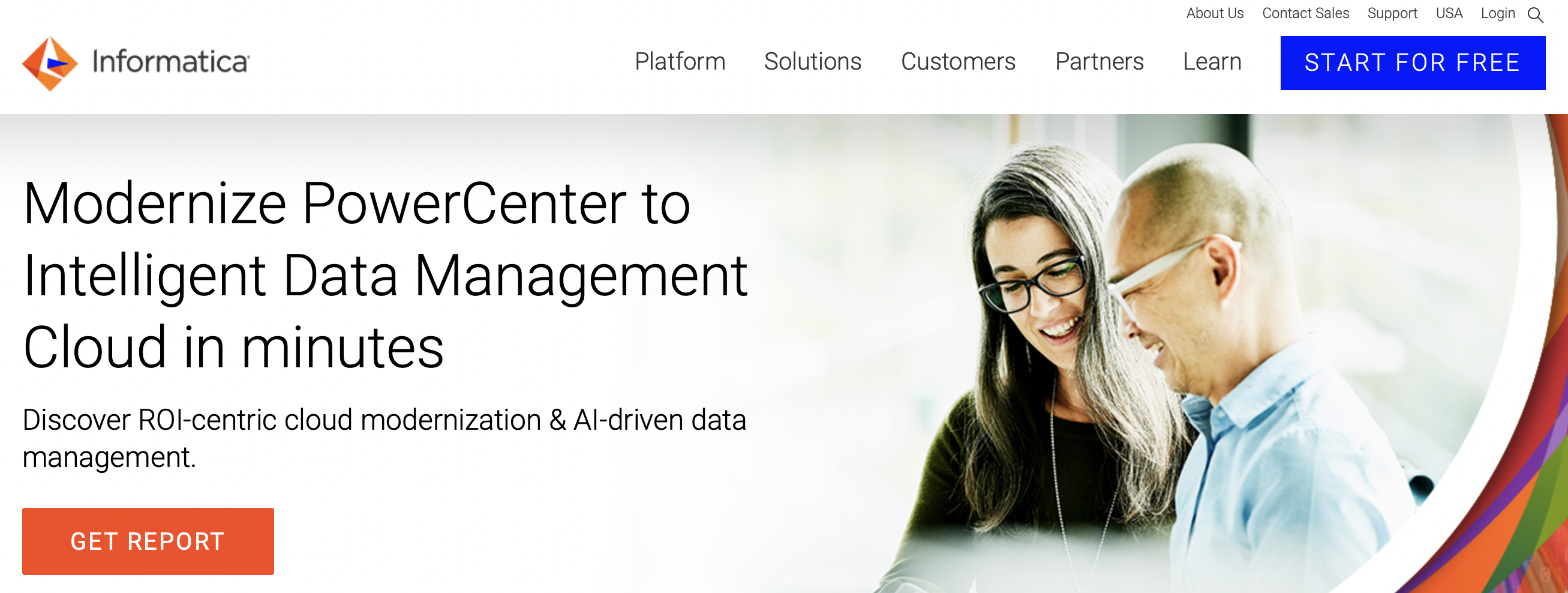
Informatica PowerCenter is an enterprise-grade data integration platform designed to facilitate the integration of disparate data sources and applications. Informatica enables you to collect, process and transform data from various formats and systems into a unified, constant data store, making it accessible for analysis, reporting, and decision-making processes.
Why Use Informatica? Informatica offers unparalleled data integration capabilities, particularly when it comes to scalability and performance in complex, enterprise-level environments. Its robust architecture is designed to handle large volumes of data and complex integration scenarios that other tools might struggle to manage efficiently.
Informatica Pros
- High Scalability and Performance – Informatica’s high scalability supports the growing data needs of enterprises without compromising on performance, making it ideal for large-scale data warehousing projects.
- Extensive Connectivity – Informatica offers broad connectivity options supporting a diverse range of data sources, including relational databases, flat files, cloud applications and big data frameworks.
- Metadata Management – The tool’s strong metadata management capabilities facilitate effective data lineage and impact analysis.
- Enhanced Data Security and Governance – Informatica PowerCenter includes features that support data security and compliance, such as role-based access control and data masking. I
Informatica Cons
- Cost – One of the primary drawbacks of Informatica PowerCenter is its cost. As a leading enterprise-grade solution, it can be very expensive, especially for small to medium-sized enterprises (SMEs).
- Complexity – Despite its graphical interface, PowerCenter’s wide array of features and capabilities can be overwhelming for new users.
- Resource Intensive – Given its enterprise-grade capabilities, Informatica PowerCenter can be resource-intensive, necessitating robust hardware and infrastructure, particularly for processing large datasets and complex integrations.
Best Suited For: Informatica PowerCenter is best suited for large enterprises that require a powerful and scalable solution for complex data integration tasks across heterogeneous systems. It’s particularly beneficial for organizations that prioritize data quality, need to manage large volumes of data, and have a diverse mix of on-premise and cloud-based applications.
2. Astera – Best For No-Code Integration And Automation

Astera Centerprise is a data integration solution designed to facilitate the seamless extraction, transformation and loading (ETL) of data across various sources and destinations. It’s targeted toward businesses who want to streamline their data process without extensive coding. Astera stands out for its user-friendly, drag-and-drop interface that simplifies complex data integration tasks.
Why Use Astera? Astera is designed to empower users of all technical levels, particularly business analysts and non-technical staff, to easily create complex data integration workflows without writing code through its user-friendly drag-and-drop interface.
Astera Pros
- No-Code Data Integration – Astera’s standout feature is its no-code platform, which allows users to design, execute, and manage data integration processes without needing extensive programming knowledge.
- User-Friendly Interface – The intuitive drag-and-drop interface simplifies complex data integration tasks, making it easier for users to map out and visualize data workflows.
- Data Quality and Transformation – It provides robust data quality and transformation features, including data cleansing, validation, and deduplication, ensuring that the data being integrated is accurate, consistent, and reliable.
- Automation and Efficiency – Astera supports automated data workflows, which can significantly reduce manual tasks and improve efficiency.
Astera Cons
- Performance with Large Datasets – While Astera is effective for a wide range of data integration scenarios, its performance may vary when handling extremely large datasets or highly complex transformations compared to solutions specifically designed for big data environments.
- Cost Consideration for Small Businesses – The licensing cost, while competitive, may be a consideration for small businesses or startups with limited budgets.
- Advanced Analytics and Reporting – While Astera excels at data integration and quality, organizations requiring advanced analytics and reporting capabilities might need to integrate additional tools or platforms to fulfill these requirements comprehensively.
Best Suited For: Astera is ideally suited for mid-sized companies aiming to simplify complex data integration and transformation projects without extensive coding.
3. Airbyte – Best For Customizable Open-Source Connectors

Airbyte is an open-source data integration platform designed to facilitate the efficient and reliable synchronization of data from various sources to destinations, such as databases, data lakes, and data warehouses.
Why Use Airbyte? One of the most distinguishing features of Airbyte is its extensive and rapidly growing library of pre-built connectors, all available in an open-source environment. Because of this, companies can easily connect various data sources and destinations without the need for extensive custom development.
Airbyte Pros
- Extensive Connector Library – Airbyte offers a wide range of pre-built connectors for various data sources and destinations.
- Open-Source Model – Being open-source, it allows for transparency, community-driven enhancements, and customization.
- Flexibility and Customizability – Users can customize connectors or build new ones to meet unique integration requirements, providing flexibility that’s hard to find in proprietary tools.
- Cost-Effective – For organizations looking to minimize costs, Airbyte’s open-source nature eliminates licensing fees associated with many commercial data integration tools.
Airbyte Cons
- Dependency on Community for Updates – While the community-driven model accelerates development, the reliance on community contributions for connector updates and maintenance may vary in reliability and timeliness.
- Resource Requirements for Self-Hosting – Deploying Airbyte on-premises or in a private cloud environment requires infrastructure and resources, potentially adding to operational costs.
- Varying Connector Quality – As connectors are developed by different contributors, there can be variability in quality, performance, and documentation.
Best Suited For: Airbyte is a reliable solution if you’re looking for a flexible, cost-effective data integration solution that can quickly adapt to changing business requirements.
4. Meltano – Best For DevOps-Focused Data Operations
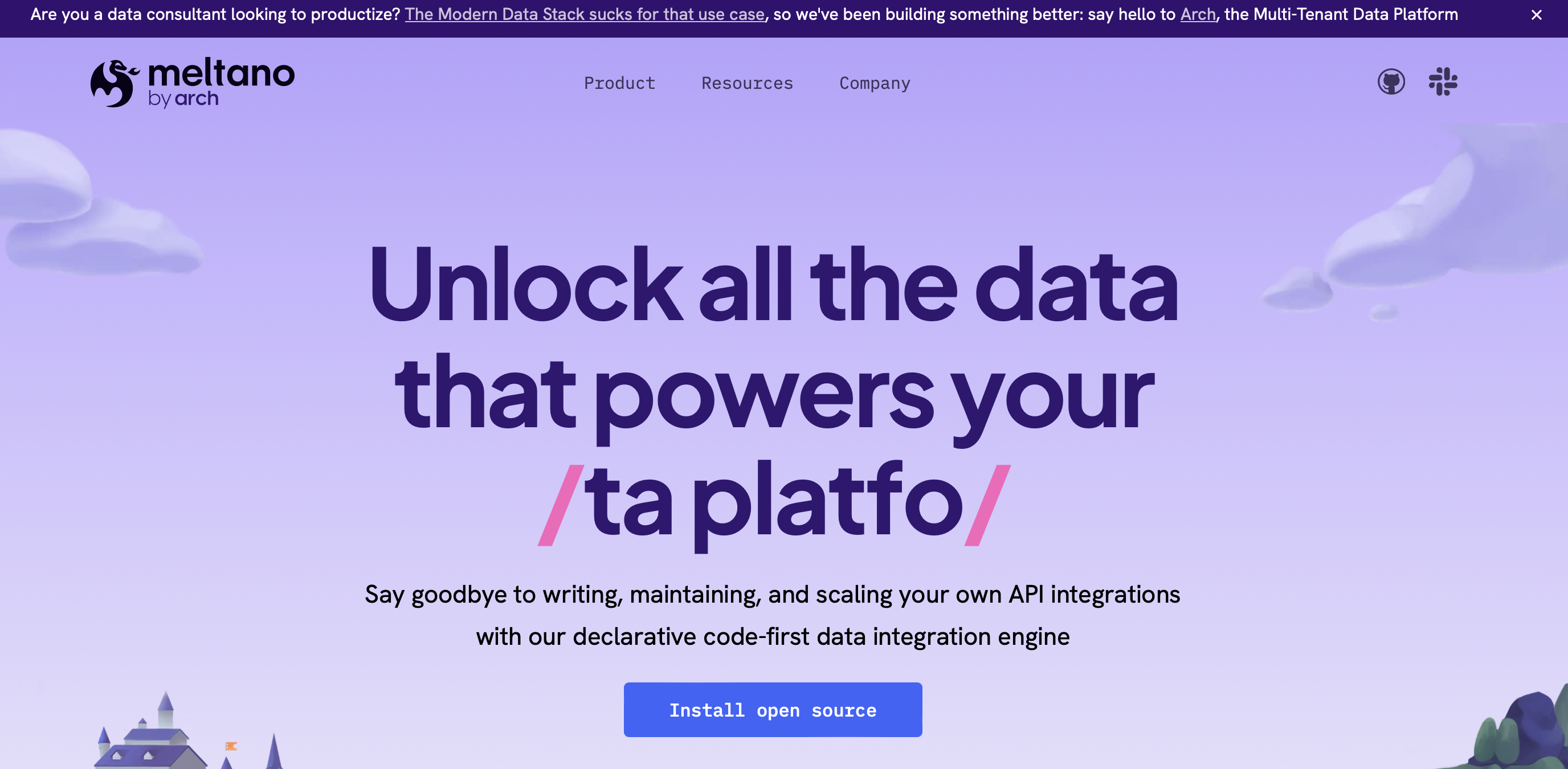
Meltano is an open-source platform for managing the entire data lifecycle, from extraction and transformation to loading and visualization. It is designed to simplify the process of building data pipelines for analytics and reporting purposes. Meltano provides a command-line interface (CLI) and a collection of pre-built connectors and plugins for popular data sources and analytics tools.
Why Use Meltano? Meltano is ideal for companies looking for an open-source, flexible, and DevOps-oriented data integration and pipeline management tool.
Meltano Pros
- It’s Open Source – Meltano is an open-source tool, so it benefits from community contributions and allows for customization.
- Plugin-Based Architecture – Its modular design supports diverse data sources and destinations through the use of Singer taps and targets.
- DevOps and DataOps Support – Meltano emphasizes automation, monitoring, and testing, aligning well with DevOps and DataOps methodologies.
- Collaboration and Version Control – The tool integrates with version control systems like Git, enhancing collaboration among team members and tracking changes across the data pipeline’s lifecycle.
Meltano Cons
- Dependency on the Singer Framework – Meltano’s reliance on Singer for its source and destination connectors means its capabilities are somewhat tied to the development and maintenance of Singer taps and targets.
- Feature Breadth – Compared to more established commercial tools, Meltano might lack certain advanced features out of the box, particularly in areas like advanced data transformation, built-in analytics, and comprehensive user interfaces.
- Learning Curve – Users unfamiliar with the command-line interface or the underlying technologies (like Singer taps and targets) may face a steeper learning curve.
Best Suited For: Meltano is a great data integration tool, especially for projects where flexibility, customization and the principles of DevOps and DataOps are prioritized.
5. Stitch – Best For Simple Cloud Data ETL
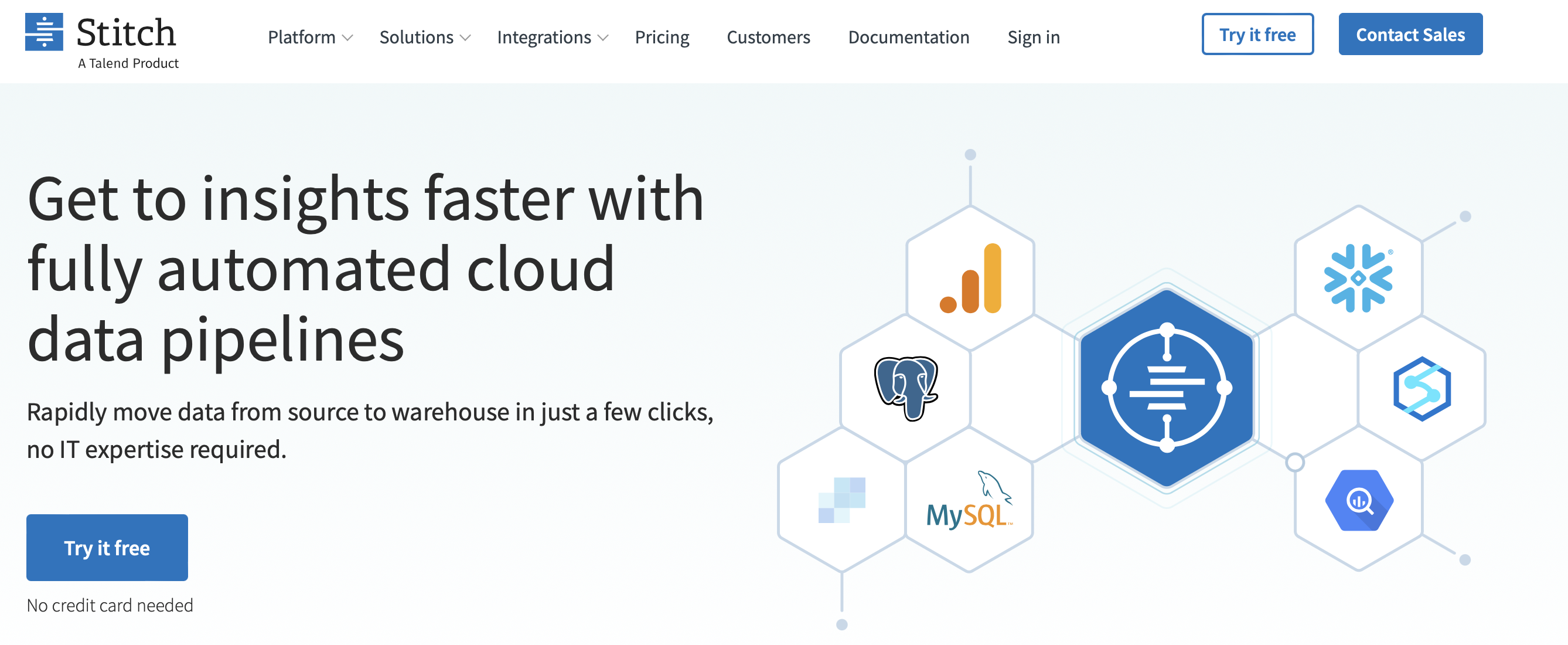
Stitch Data, popularly referred to as Stitch, is a cloud-based, fully managed ETL service that allows businesses to move their data from several platforms into a single, centralized data warehouse. Stitch simplifies the data integration process by providing an easy-to-use platform that is able to connect to many different sources, including databases, SaaS applications, cloud storage solutions, and more.
Why Use Stitch? What sets Stitch apart from other tools is that users can quickly connect their data sources to their data warehouse without having extensive technical expertise. It offers a fully managed service, handling the complexities of scaling, maintenance, and security, enabling companies to focus on analyzing their data rather than managing the infrastructure.
Stitch Pros
- Easy to Use – Stitch is praised for its user-friendly interface and ease of setup, making it accessible for users regardless of their technical background.
- Compatibility – Stitch provides flexibility and ensures compatibility with different databases, SaaS platforms, and cloud data warehouses like Amazon Redshift, Google BigQuery, and Snowflake.
- Fully Managed Service – Being a fully managed service, Stitch handles infrastructure management, security, and maintenance.
- Scalability – Stitch offers automatic scaling to handle increasing data volumes, making it suitable for businesses experiencing growth or seasonal fluctuations in data.
Stitch Cons
- Limited Transformation Capabilities – Stitch primarily focuses on the “Extract and Load” components of ETL, offering limited support for data transformation within the platform.
- Cost for High Volumes – While Stitch’s pricing model is straightforward, costs can escalate with high data volumes or a large number of sources.
- Performance Issues with Complex Pipelines – In some cases, especially with very large data volumes or complex data sources, performance bottlenecks can occur, affecting the timeliness of data availability in the warehouse.
Best Suited For: Stitch is ideally suited for small to medium-sized businesses seeking to automate the consolidation of data from various SaaS applications and databases into a single data warehouse, enabling quick, data-driven decision-making without extensive IT resources.
6. Hevo – Best For Real-Time Data Loading
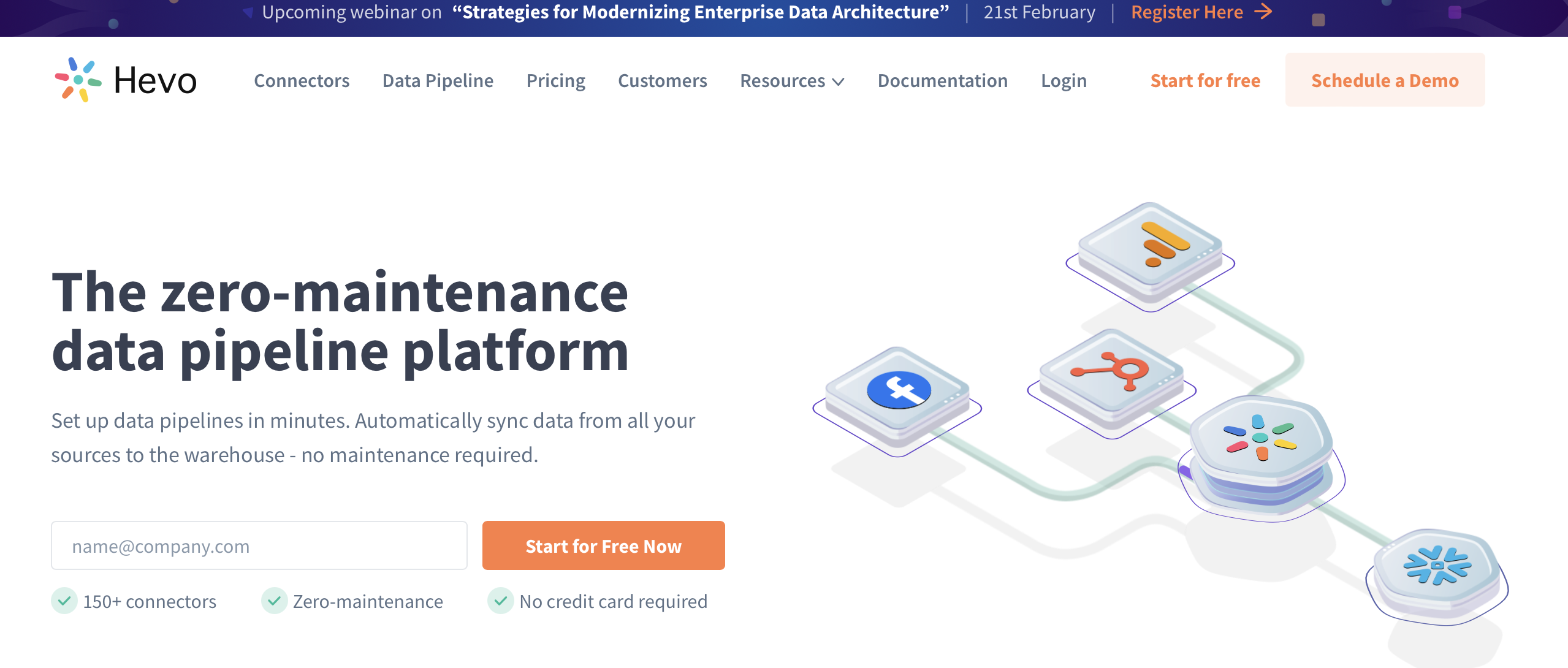
Hevo is a no-code data pipeline platform that provides businesses with a fully automated solution to integrate data from multiple sources into a cloud data warehouse or database in real-time. The platform offers replication capabilities from over 150 different sources to your preferred destination, including options like Snowflake, BigQuery, Redshift, Databricks, and Firebolt.
Hevo’s main purpose is to simplify the process of data extraction, transformation, and loading (ETL) or extraction, loading, and then transformation (ELT), enabling users to consolidate their data for analytics and business intelligence purposes easily.
Why Use Hevo? Its comprehensive no-code approach allows users, regardless of their technical background to efficiently set up and manage complex data pipelines.
Hevo Pros
- No-Code Platform – Hevo’s user-friendly, no-code interface makes it accessible to users of all technical levels.
- Real-Time Data Integration – Hevo supports real-time data replication, allowing businesses to make timely, informed decisions based on the latest data.
- Automatic Schema Detection and Mapping – Hevo automatically detects the schema of incoming data and maps it to the target data warehouse schema, reducing manual effort and potential errors.
- Built-In Transformation – It provides capabilities for transforming data within the platform, enabling users to clean, enrich, and transform data before loading it into the destination.
Hevo Cons
- Complex Transformations – While Hevo supports data transformation, users with highly complex transformation requirements might find its capabilities limited compared to specialized ETL tools.
- Integration Limits – Although Hevo supports a wide range of sources and destinations, there may still be niche or custom systems that are not directly supported, potentially requiring additional tools or workarounds.
- Performance in High Volume Scenarios – For extremely large datasets or highly complex data pipelines, users might encounter performance bottlenecks.
Best Suited For: Hevo can be a great tool for small to medium-sized businesses that need a solid but accessible solution to consolidate and utilize their data across multiple platforms.
7. Pentaho – Best For Comprehensive Data Analytics

Pentaho is a comprehensive business intelligence (BI) software that provides data integration, OLAP services, reporting, information dashboards, data mining, and extract, transform, load (ETL) capabilities. It is designed to help businesses collect, analyze, and integrate data from multiple sources to aid in decision-making processes.
Pentaho supports various data sources, including SQL databases , NoSQL databases, file formats, and even big data sources like Hadoop.
Why use Pentaho? The platform’s versatility to integrate with a wide range of data sources, along with its powerful ETL capabilities, advanced analytics and user-friendly graphical interfaces, make Pentaho a suitable choice for businesses who want to derive actionable insights from their data.
Pentaho Pros
- Comprehensive BI Suite – Pentaho provides a full spectrum of BI capabilities, including reporting, analysis, dashboards, data mining, and ETL, all within a single platform.
- Open Source with Strong Community Support – The community edition of Pentaho is open-source, offering a cost-effective solution for businesses.
- Flexible and Customizable – Pentaho’s open architecture allows for significant customization and integration with existing IT environments.
- Data Source Connectivity – It supports diverse data sources, from traditional relational databases to big data sources like Hadoop.
Pentaho Cons
- Performance Issues with Large Datasets – Some users report performance degradation when working with very large datasets or complex data transformations, particularly in the community edition.
- Limited Documentation and Support in Community Edition – While the enterprise edition offers comprehensive support, users of the free community edition may find documentation and support more limited.
- UI and Design Outdated – Some users feel that the user interface and design elements of Pentaho are somewhat outdated compared to newer BI tools.
Best Suited For: Pentaho is a great solution for companies engaged in complex data-driven projects requiring deep analytics, such as large enterprises with extensive data ecosystems spread across various sources like databases, cloud platforms and big data systems.
8. Oracle Data Integrator – Best For Oracle Ecosystem Optimization
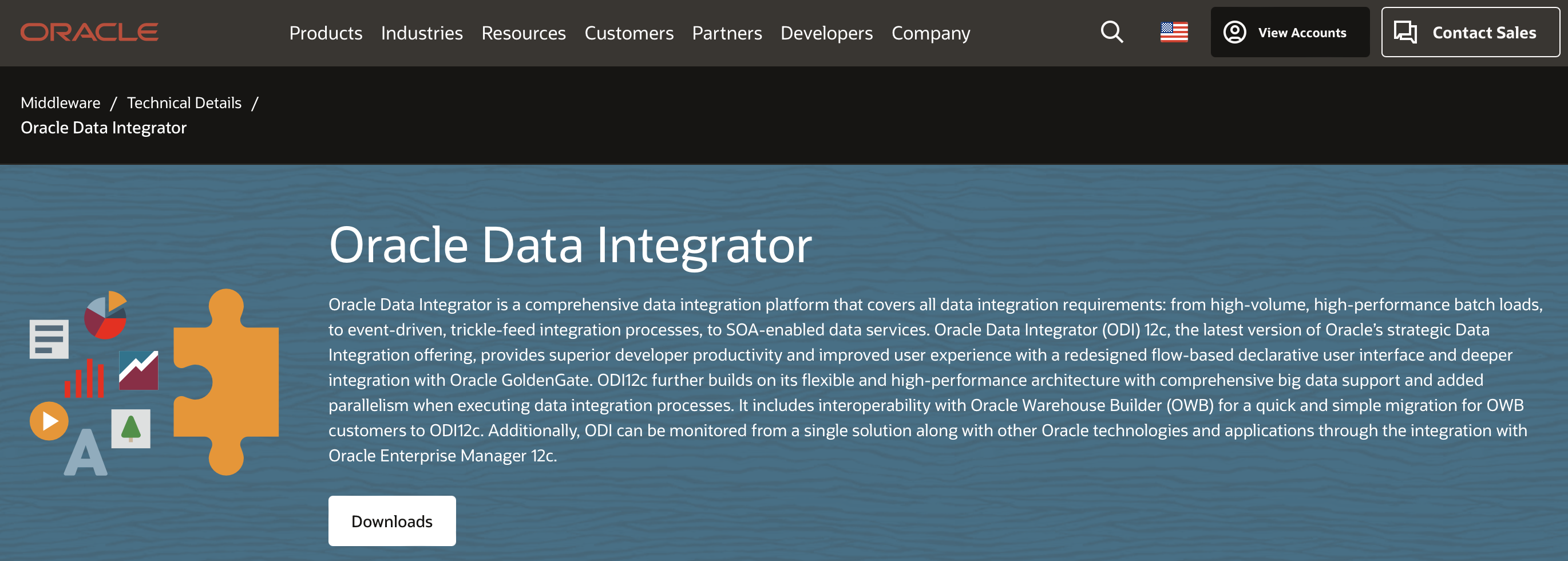
Oracle Data Integrator (ODI) is a versatile data integration tool that provides high-efficiency, adaptability, and diverse data handling capabilities across numerous platforms. Its distinctive Extract, Load, Transform (ELT) methodology, where data transformation processes are executed in the target database, leveraging the database’s processing power for more efficient data manipulation and integration tasks.
ODI supports a wide array of data sources and targets, including relational databases, XML, JSON, big data systems, and even flat files, making it a versatile choice for organizations dealing with diverse data environments.
Why Use ODI? One of the major advantages of ODI is its innovative ELT approach, which optimizes data processing by leveraging the target databases’s power, leading to significantly enhanced performance and efficiency compared to traditional ETL tools.
ODI Pros
- High Performance with ELT Approach – ODI optimizes data processing by leveraging the processing power of the target database, allowing for faster and more efficient data transformations compared to traditional ETL processes.
- Broad Connectivity – It supports a wide range of data sources and targets, including relational databases, big data systems, cloud platforms, and flat files.
- Integration with Oracle Ecosystem – ODI is highly integrated with Oracle products, offering seamless connectivity and enhanced performance for organizations using Oracle databases, applications, and middleware.
- Advanced Data Governance – It provides robust data governance capabilities, ensuring data quality and consistency across the enterprise.
ODI Cons
- Complexity and Learning Curve – The tool’s comprehensive features and capabilities can result in a steep learning curve.
- Cost – As with many Oracle products, ODI can be expensive, especially for small businesses or startups.
- Limited Community Support – Compared to open-source alternatives, ODI might have less community support.
- UI and Usability – Some users find ODI’s user interface less intuitive, which can affect productivity and the user experience.
Best Suited For: Oracle Data Integrator (ODI) is best suited for large-scale, complex data integration projects within organizations that already leverage Oracle’s ecosystem, including those with heavy reliance on Oracle databases and applications.
9. SnapLogic – Best For Self-Service Data Pipelines
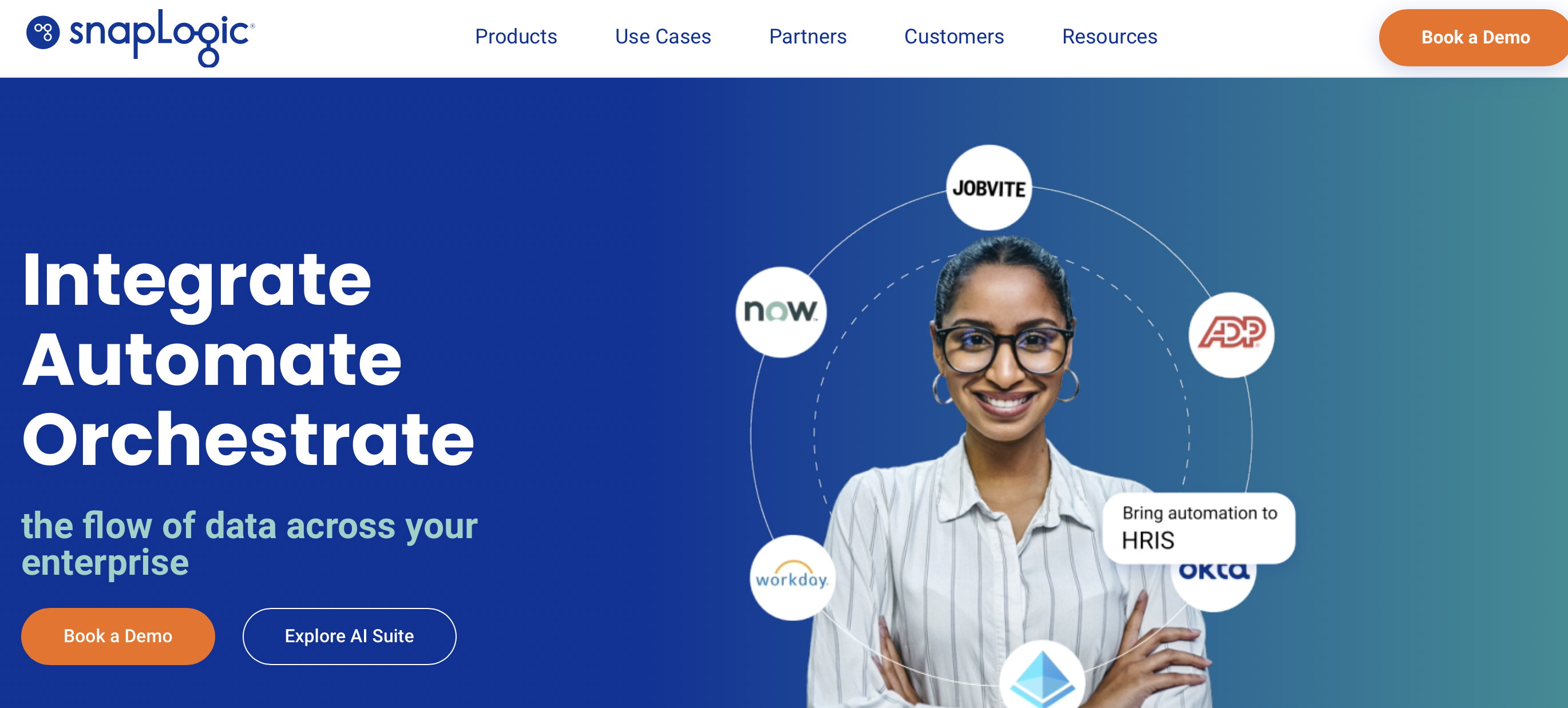
SnapLogic operates as a cloud-driven iPaaS solution, streamlining rapid and effective data integration as well as data movement across various applications, data sources, and APIs. It helps organizations automate their workflows, merging diverse data systems and facilitating data analytics and business intelligence with minimal coding, it simplifies integration efforts, making them more approachable for users without technical expertise.
Why Use SnapLogic? SnapLogic distinguishes itself because of its intuitive, visual programming interface that simplifies complex data integration tasks, making it accessible for users with both technical and non-technical expertise.
SnapLogic Pros
- Intuitive Visual Interface – SnapLogic’s user-friendly, drag-and-drop interface simplifies the creation and management of data pipelines, making complex integrations accessible to non-technical users.
- Its Connectors (Snaps) – SnapLogic offers an extensive library of pre-built connectors, known as Snaps, for various applications, databases, APIs, and data formats, facilitating quick and easy integration across a diverse set of systems.
- Scalable and Flexible – Being cloud-native, SnapLogic provides excellent scalability and flexibility, allowing businesses to efficiently handle varying data volumes and integration needs without significant infrastructure investments.
- Real-Time Integration – SnapLogic supports real-time data integration, enabling timely data analysis and decision-making, which is crucial for dynamic business environments.
SnapLogic Cons
- Cost – For small businesses or startups, the cost of SnapLogic might be a consideration, as pricing could be higher compared to other tools, especially for extensive integration needs.
- Complex Customizations – While SnapLogic is versatile, certain complex integrations might require custom Snaps or more in-depth technical expertise to ensure optimal performance and functionality.
- Dependency on Internet Connectivity – As a cloud-based platform, SnapLogic’s performance and accessibility are contingent on reliable internet connectivity.
Best Suited For: SnapLogic is best suited for medium to large enterprises seeking to streamline and accelerate their data integration processes across a diverse array of applications, databases, and APIs without extensive coding.
10. IBM Datastage – Best For Scalable Enterprise Data Integration

IBM DataStage is a powerful, scalable ETL (Extract, Transform, Load) tool that is part of the IBM InfoSphere Information Server suite. It is designed to help organizations integrate and transform large volumes of data , enabling them to cleanse, process, and prepare data for analysis and reporting.
DataStage supports data integration across multiple systems, including relational databases, flat files, and big data platforms, and it is capable of handling high volumes of data under complex data processing scenarios.
Why Use IBM DataStage? IBM’s extensive range of connectors allows the seamless integration of diverse data sources and targets, including cloud, big data platforms, and traditional databases. DataStage’s powerful parallel processing engine optimizes data throughput and transformation, ensuring efficient handling of data-intensive tasks.
IBM DataStage Pros
- High Performance and Scalability – DataStage excels in handling large volumes of data with its parallel processing capabilities, ensuring efficient data transformation in complex, data-intensive environments.
- Wide Connectivity – It offers a broad range of built-in connectors, allowing seamless integration with various data sources and targets, including databases, cloud platforms, and big data systems.
- Data Transformation Features – DataStage provides comprehensive data cleansing, transformation, and enrichment capabilities, supporting complex data integration logic to meet diverse business requirements.
- Graphical Interface – The tool features a user-friendly graphical interface for designing ETL processes, which simplifies the development and maintenance of data pipelines and reduces the learning curve for new users.
IBM DataStage Cons
- Cost – One of the primary drawbacks of DataStage is its cost, as it can be quite expensive, particularly for small to medium-sized businesses or startups, making it less accessible compared to some open-source alternatives.
- Complexity in Advanced Implementations – While the graphical interface simplifies many tasks, setting up and tuning complex ETL jobs can still be challenging and may require specialized skills, especially for optimizing performance.
- Resource Intensity – The high performance of DataStage comes with significant resource requirements for both the development and runtime environments, which can translate into higher infrastructure costs.
Best Suited For: IBM DataStage is a powerful, high-performance ETL solution best suited for large enterprises with complex data integration needs and the budget to support it.
11. Apache Airflow – Best For Workflow Automation And Monitoring

Apache Airflow is an open-source platform designed to programmatically author, schedule, and monitor workflows. It allows users to define tasks and dependencies in Python, offering a dynamic, extensible, and scalable approach to workflow management.
The core principle behind Airflow is to treat workflows as code, allowing them to be versioned, maintained, and integrated into the continuous integration and deployment (CI/CD) pipelines, much like any other software project.
Why Use Apache Airflow? Apache Airflow is an ideal tool to manage complex workflows and handle task dependencies efficiently. Its flexible and scalable architecture provides users with control and reliability for data integration projects.
Apache Airflow Pros
- Flexible Workflow Orchestration – Airflow allows for sophisticated scheduling and management of workflows, with the ability to define complex dependencies and sequential and parallel task execution.
- Open Source – Being open-source, Airflow benefits from a large community of contributors who continuously enhance its features and capabilities.
- Dynamic Workflow Configuration – Workflows are defined in Python code, which enables dynamic generation of tasks and dependencies, providing a powerful way to programmatically manage workflows.
- Extensive Integration – With a wide range of available plugins and the ability to easily create custom ones, Airflow can integrate with almost any system, including cloud services, databases, and data warehouses.
Apache Airflow Cons
- Learning Curve – The flexibility and power of Airflow come with a steep learning curve, especially for users not familiar with programming concepts.
- Resource Intensive – Depending on the complexity and volume of tasks, Airflow can be resource-intensive, requiring significant computing resources to run effectively.
- Complexity in Setup and Maintenance – Setting up an optimal Airflow environment, including its configuration for scalability and reliability, can be complex and requires a deep understanding of its internal workings.
Best Suited For: Apache Airflow is particularly suited for complex data engineering tasks that benefit from its programmable approach to workflow management.
12. Talend Open Studio – Best For Open-Source Data Quality Management

Talend Open Studio is an open-source, Java-based data integration tool offered by Talend, designed to facilitate the integration, transformation, and loading of data across various sources and destinations. It provides a comprehensive suite of tools for ETL processes (Extract, Transform, Load), enabling users to design and execute data workflows through a graphical interface, which simplifies the process of mapping and transforming data.
Why Use Talend? Talend stands out in the data integration landscape for its comprehensive open-source nature, offering a cost-effective solution without compromising on functionality. Its user-friendly graphical interface simplifies complex ETL processes, making it accessible to both technical and non-technical users.
Talend Pros
- Cost-Effective – Being open-source, Talend Open Studio provides a powerful data integration solution without the licensing costs associated with commercial software.
- Extensive Library of Connectors – It offers an extensive library of pre-built connectors and components, facilitating easy integration with various data sources.
- User-Friendly Interface – The graphical development environment allows for intuitive design and management of ETL processes.
- Data Quality Features – Talend includes built-in functions for data quality, cleansing, and validation, helping maintain high data integrity across integration projects.
Talend Cons
- Performance – For extremely large datasets or complex transformations, Talend Open Studio might exhibit performance limitations compared to some commercial ETL tools.
- Community vs. Enterprise Edition – While the open-source version is robust, some advanced features and components are reserved for the paid Enterprise edition.
- Resource Intensity – Running Talend Open Studio, especially for large projects, can be resource-intensive, requiring significant computing power for optimal performance.
Best Suited For: Talend is a great solution for small and medium businesses that require robust data integration, ETL processes, and data quality management without substantial financial investment.
13. Fivetran – Best For Automated Integration For Analytics
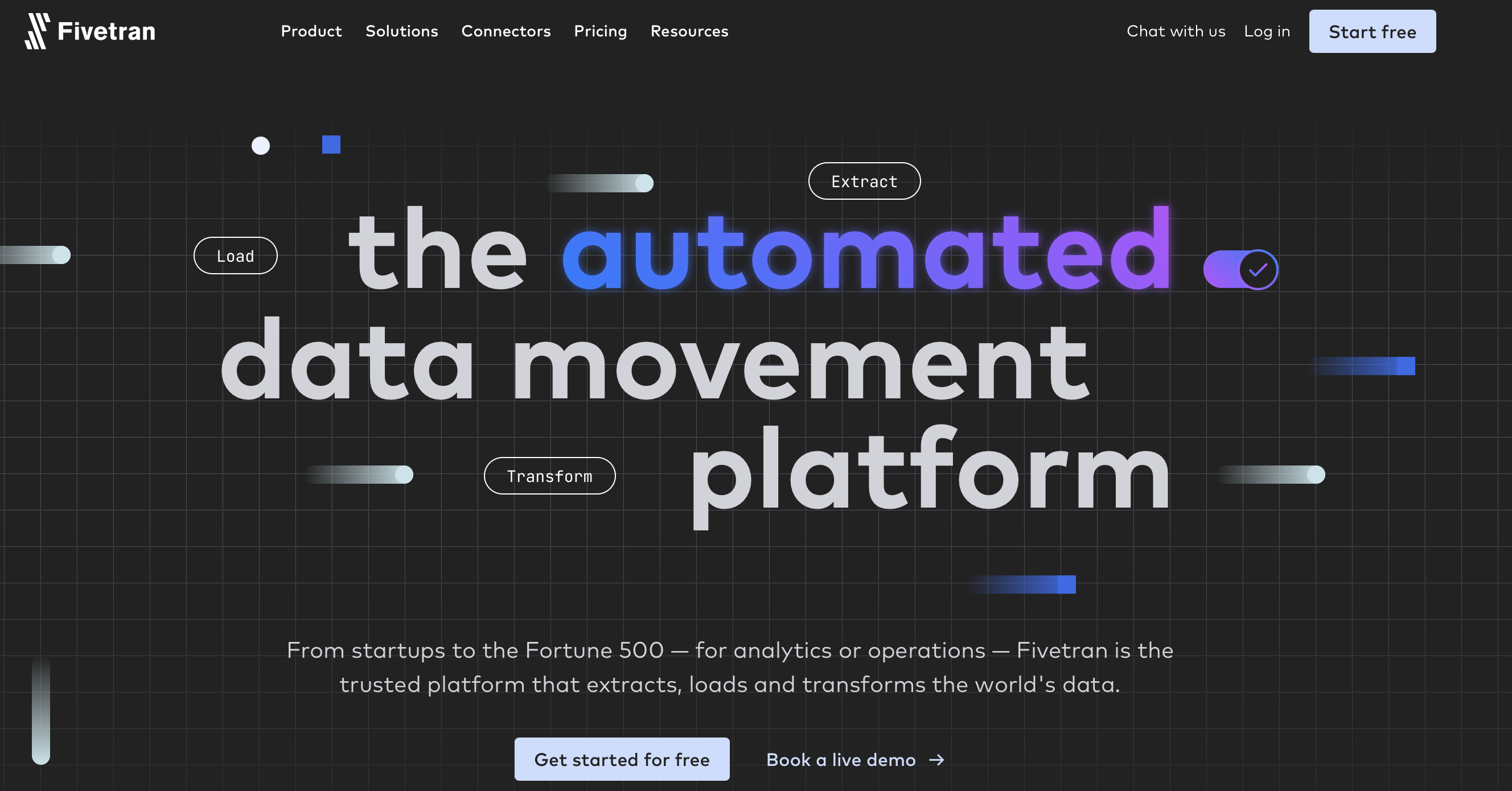
Fivetran is a cloud-based data integration service that automates the extraction, loading, and transformation (ELT) of data into a centralized data warehouse or data lake. IT simplifies the process of consolidating data from various sources, including databases, SaaS applications, cloud services, and more, into a single repository for analysis and business intelligence purposes.
Why Use Fivetran? Fivetran is particularly valued for excelling in simplifying the data integration process through its automated pipeline creation.
Talend Pros
- Extensive Range of Connectors – Fivetran provides a diversity of pre-built connectors for databases, SaaS applications, cloud services, and more.
- Automated ELT Processes – It automates the extraction, loading, and transformation of data, significantly reducing the manual effort and complexity involved in managing data pipelines.
- Real-Time Data Synchronization – Fivetran supports real-time data updates, ensuring that the data in your warehouse is always current.
- Reliability and Maintenance-Free – Fivetran offers a fully managed service, which means it takes care of maintenance, scaling, and updates.
Talend Cons
- Limited Customization for Data Transformation – While Fivetran handles ELT efficiently, its capabilities for data transformation within the platform can be limited compared to more customizable or code-intensive tools.
- Dependence on Third-Party Systems – The performance and reliability of Fivetran can depend on the availability and API limits of the source systems.
- Limited Control Over Pipeline Execution – Users have less control over the specifics of when and how data pipelines are executed.
Best Suited For: Fivetra is a reliable solution for businesses looking to streamline and automate their data integration processes with minimal overhead.
How to Choose Data Integration Tools
One of our main recommendations when it comes to choosing data integration tools is to make sure that it is extensible. Why? Because it’s likely that within a few months, your data will look differently. Similarly, it’s important to prioritize tools that have minimal lock-in; this way, if in the future, you want to switch tools, you can do it smoothly.
With that being said, these are some of our tips for you to choose the best data integration tool for your projects:
1. Start by Assessing Your Data Needs
Identify all the data sources (for example, databases or cloud services) and destinations (data warehouses, data lakes) you need to integrate. Here, consider the variety, volume and velocity of the data. Next, define your primary use cases for data integration, such as ETL processes for analytics or data migration projects.
2. Evaluate Technical and Functional Requirements
There are 5 key aspects to consider when it comes to functional requirements:
- Look for tools that are easy to use; that have an intuitive interface, and simplify complex integrations.
- Make sure that the tool supports all the data sources and destinations you work with (including any niche or legacy systems)
- The tool should efficiently handle your current and anticipated data volumes and complexity without significant performance impact. In other words, it should be scalable.
- Check for tools that have real-time integration capabilities.
- Evaluate the tool’s capabilities for data cleansing, transformation and enrichment to meet your data quality requirements.
3. Evaluate Its Costs
Not all tools are open-source or affordable. Before deciding what tools works best, also make sure to understand the pricing model and that it fits with your budget. This involves not only making an evaluation of upfront costs but also long-term operational costs.
Additionally, check it the tool meets security requirements and complies with relevant data protection regulations (like GDPR, CCPA)
4. Conduct Proof of Concept (PoC)
If you’re not sure about certain tool, before finalizing your decision, consider conducting a PoC, using your data and integration scenarios to evaluate if the tool matches your needs along with its easy of use and performance.
With a PoC you can measure how quickly and easily you can set up integrations and whether the tool simplifies the data integration process as expected.
5. Time to Make a Decision
If you’re working with a big team, it’s always useful to collect feedback from stakeholders involved in the PoC, including data engineers, database architects , and analysts.
After reviewing your technical requirements, operational needs, and budget constraints, ensure it aligns with your long-term data strategy. If it covers the non-negotiables, then you’ll find your tool!
Leveraging the Right Data Integration Tool for Your Need
From no-code data integration tools like Hevo or open-source platforms useful for data quality management like Talend, there are many options useful to tackle your data integration needs.
By selecting a tool that aligns with these criteria, you can effectively streamline your data operations, enhance analytical capabilities, and ultimately drive more informed business decisions.
Additionally, it’s always key to have qualified data engineers in your team in order to leverage these tools to their maximum capabilities. If you’re looking to scale your technical team with data experts, contact us. Having more than a decade of headhunting and recruiting experience, we’ve become experts in matching companies with the right candidates.
